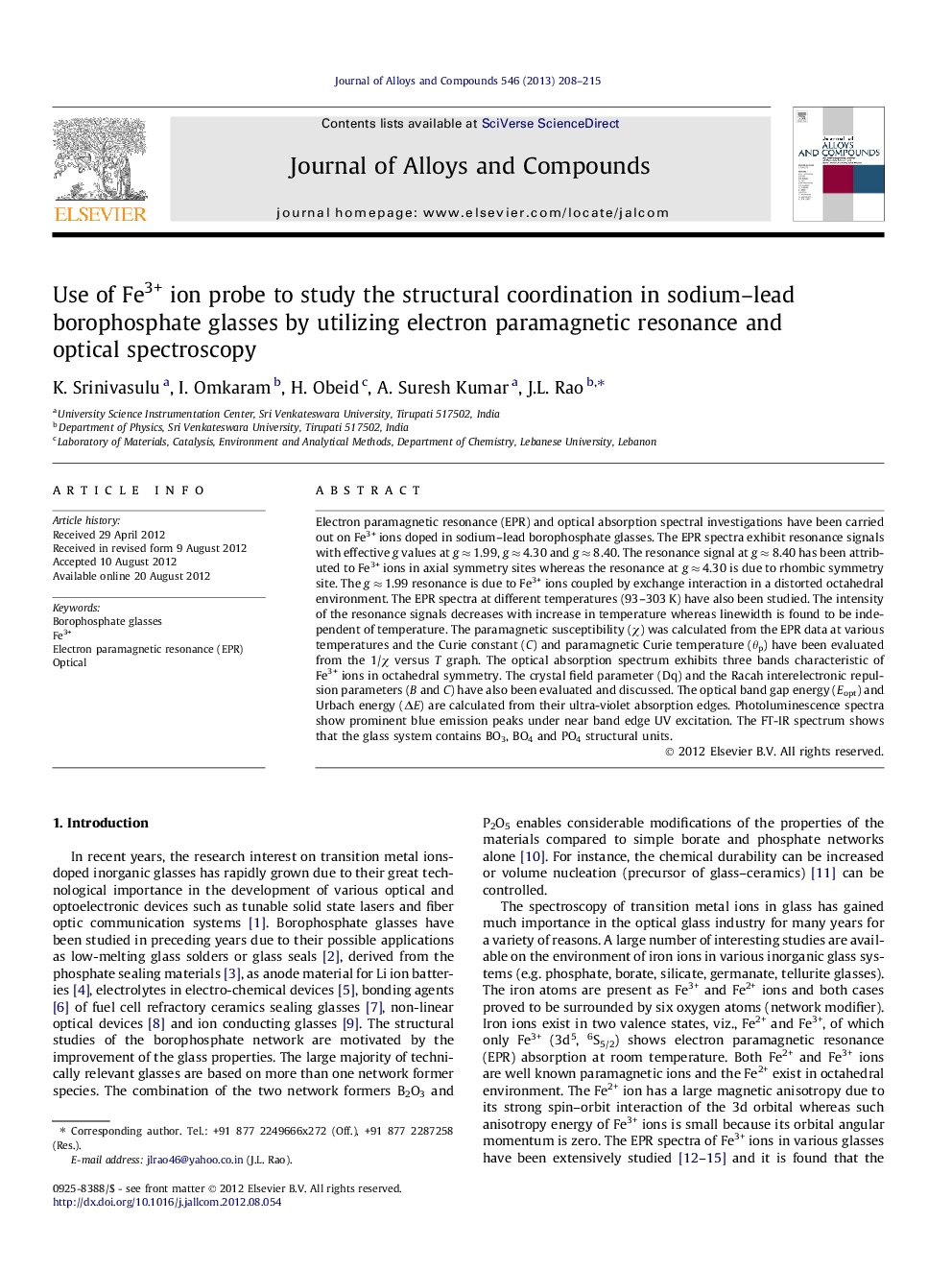| کد مقاله | کد نشریه | سال انتشار | مقاله انگلیسی | نسخه تمام متن |
|---|---|---|---|---|
| 1615256 | 1516347 | 2013 | 8 صفحه PDF | دانلود رایگان |

Electron paramagnetic resonance (EPR) and optical absorption spectral investigations have been carried out on Fe3+ ions doped in sodium–lead borophosphate glasses. The EPR spectra exhibit resonance signals with effective g values at g ≈ 1.99, g ≈ 4.30 and g ≈ 8.40. The resonance signal at g ≈ 8.40 has been attributed to Fe3+ ions in axial symmetry sites whereas the resonance at g ≈ 4.30 is due to rhombic symmetry site. The g ≈ 1.99 resonance is due to Fe3+ ions coupled by exchange interaction in a distorted octahedral environment. The EPR spectra at different temperatures (93–303 K) have also been studied. The intensity of the resonance signals decreases with increase in temperature whereas linewidth is found to be independent of temperature. The paramagnetic susceptibility (χ) was calculated from the EPR data at various temperatures and the Curie constant (C) and paramagnetic Curie temperature (θp) have been evaluated from the 1/χ versus T graph. The optical absorption spectrum exhibits three bands characteristic of Fe3+ ions in octahedral symmetry. The crystal field parameter (Dq) and the Racah interelectronic repulsion parameters (B and C) have also been evaluated and discussed. The optical band gap energy (Eopt) and Urbach energy (ΔE) are calculated from their ultra-violet absorption edges. Photoluminescence spectra show prominent blue emission peaks under near band edge UV excitation. The FT-IR spectrum shows that the glass system contains BO3, BO4 and PO4 structural units.
► EPR and optical studies reveal that Fe3+ ions are in distorted octahedral sites.
► From EPR data (1/χ−T graph), Curie temperature and Curie constant are evaluated.
► The crystalfield parameters (Dq,B,C) are evaluated.
► Emission spectrum exhibits blue emission.
► FT-IR reveals the presence of bands belonging to BO3, BO4 and PO4 structural units.
Journal: Journal of Alloys and Compounds - Volume 546, 5 January 2013, Pages 208–215